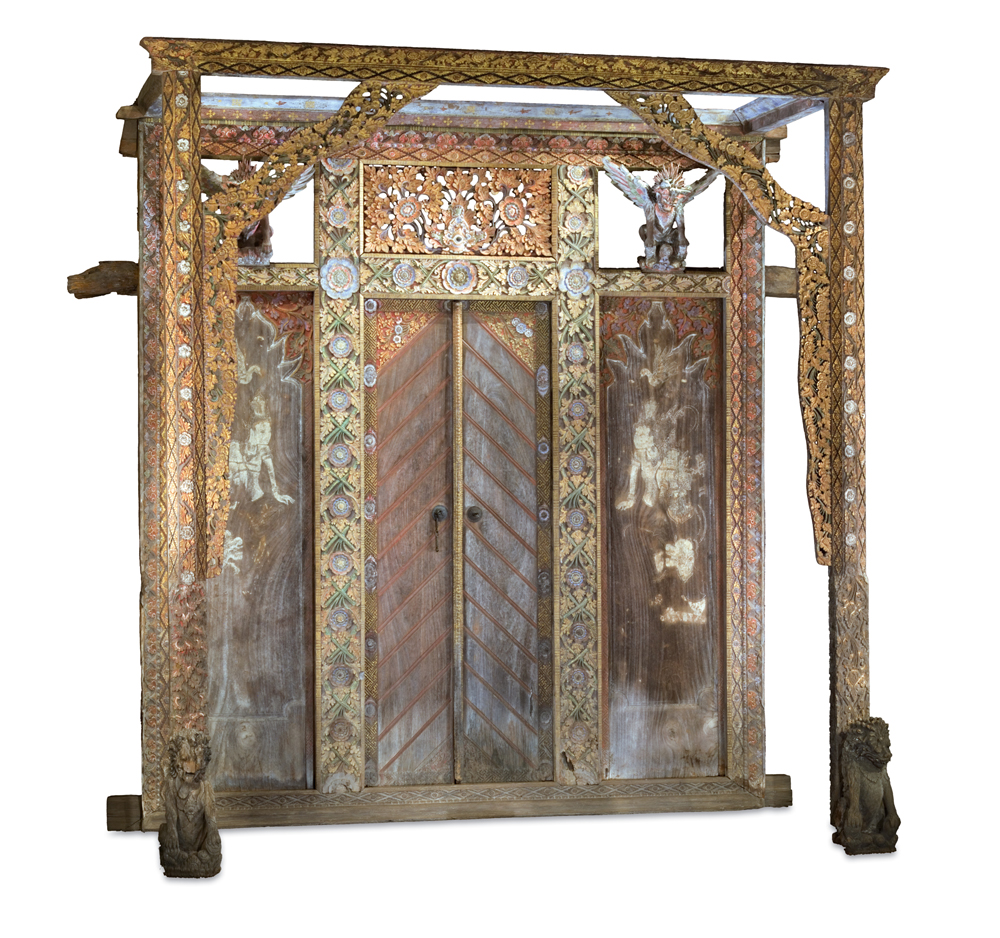Stop 10 - Temple doors
Doorways are particularly significant in Southeast Asia because they define the spatial boundaries between outer and inner realms. Intact doorways such as this one are also increasingly rare with many degrading in the tropical conditions. This type of door is only found in the north coastal kingdom of Buleleng in Bali and may trace its origins back to the Majapahit (Maj-a-pha-hit) period of the 14th and 15th centuries. The decorations on this door speak of a cultural transmission of design and stories across the Indian Ocean as well as local themes. The fretwork motif appearing as a border on the double doors is commonly called banji. This is an Indonesian deviation from the Chinese design used to evoke good luck. In Bali, carvers curiously named the design patra Mesir which means ‘the Egyptian motif'. Two panels flanking the pair of doors display weathered images of three figures. The combination of the courtly couple and a single male suggest they may represent Prince Rama and Princess Sita, together with his brother Laksmana from the Ramayana epic.
This romantic saga, a mere 24,000 verses, contains the teachings of the ancient Hindu sages. One of the most important literary works of ancient India, it has greatly influenced art and culture throughout the Indian Ocean world
The story in a nutshell is about Rama, prince of A-yod-hya, who was married to the beautiful princess Sita but together with his brother Laksmana were exiled for 14 years after being undermined at court by Rama's father's second wife who wanted her son to be king. In the forest Sita was abducted by Ravana, the king of Lanka, who incidentally has 10 heads and 20 arms. Rama gathered an army of monkeys and bears to search for her. The allies attacked Lanka, killed Ravana, and rescued Sita. In order to prove her chastity, Sita entered fire, but was vindicated by the gods and restored to her husband. The couple eventually returned to Ayodhya to rule.
The epic's poetic stature and fabulous story means that the legend of Rama has been constantly retold. It is one of the staples of various dramatic traditions in the Indian Ocean, in court drama, dance-dramas, and in shadow-puppet theatres. If you travel to Bali you may indeed get to see a shadow puppet version of the Ramayana.

- Next Stop
-

Stop 11 - Trade Textiles
next